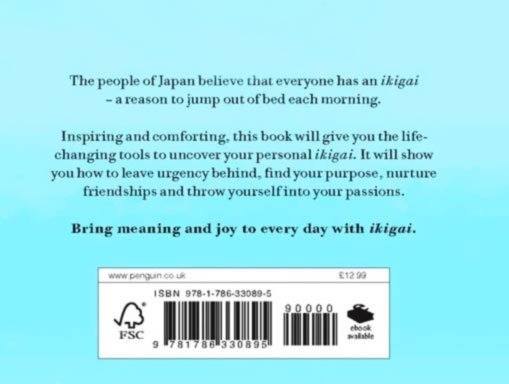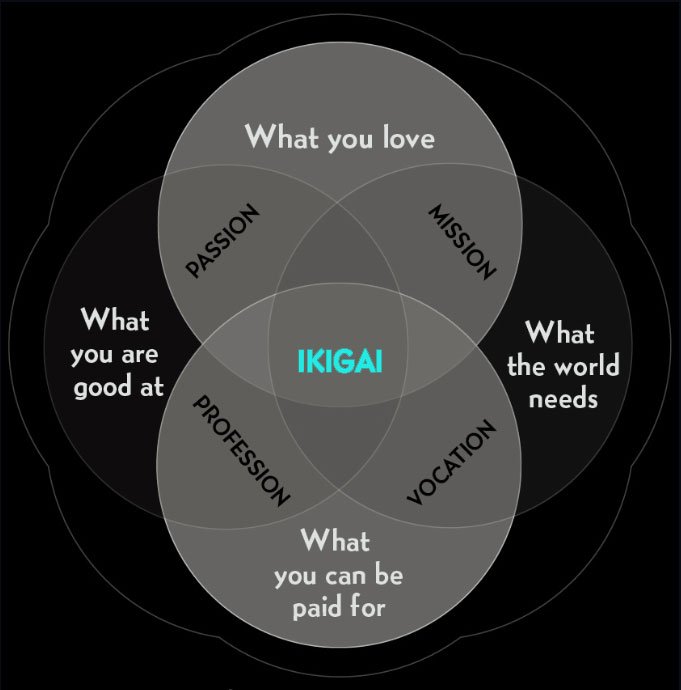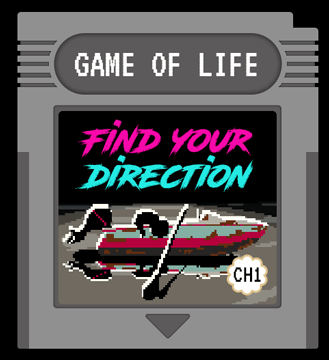Ikigai = A Japanese word that has been heavily abused by self-help authors in the West.
Wait what?
About four years ago I walked into a bookstore and saw a pretty book with cherry blossoms on the cover. The title read Ikigai: The Japanese Secret to a Long and Happy Life.
That sounds promising! I have a natural fascination for Japan, so I picked up the book and turned it around. On the back cover I read:

If there was one person that could use a kick in the butt to get out of bed each morning, it was me.
Could this be the book that will change my life forever? Will the secret for discipline and a purposeful life lay in a Japanese concept called ikigai? I knew that Japanese were among the oldest people in the world, and that they are relatively active compared to our elderly in nursing homes. Was ikigai their lifelong secret to a long, purposeful and happy life? If so, I want to find my ikigai!
On the first page of the first chapter, I saw this diagram:

I had seen this diagram before!
A few weeks earlier I scrolled past this exact diagram, with the only difference being that instead of Ikigai, the word Purpose stood in the middle. The diagram imposed a lot of questions and I decided to fill those four circles for my personal skills, hobbies and work opportunities. It proved to be a really fun assignment and it helped me clarify which activities in life I find important.
But did this mean that I unknowingly found my ikigai?
Is ikigai simply the Japanese word for purpose?
And is this diagram the Japanese way of combining your passion, mission, profession and vocation into a purposeful life?
I was skeptic, so I left the book store and downloaded the eBook somewhere for free.
I’m a pirate, sue me.
Purpose Venn Diagram
At home I did more research on Ikigai and it turned out that this pretty diagram had nothing to do with Ikigai. What you are looking at is the Purpose Venn Diagram. A Japanese person will not recognize this graph. They will not think about these four questions when they think about their Ikigai. Ikigai is not a four-question framework, nor the Japanese secret to a long and happy life.
The Purpose Venn diagram was made by Borja Vilaseca in his book Qué Harías Si No Tuvieras Miedo (What Would You Do If You Weren’t Afraid?). His version simply had an asterisk in the middle; no word.
Then Marc Venn, an American entrepreneur, saw this graph and thought it would be a good idea to merge it with a word he recently heard in a TED Talk by Dan Buettner. Dan is a reporter for National Geographic and mentions ikigai in his talk about centenarians, How To Live To Be 100+. He argued that ikigai may be the reason why some of the oldest people live on the island of Okinawa in Japan.
Inspired by the TED Talk, Marc Venn saw an opportunity. Without any further understanding of ikigai, he wrotee a blog post about it in about 45 minutes. In this post, he published his version of Borja’s diagram with Ikigai replacing the asterisk in the middle. It became an instant hit. According to Marc Winn himself:
‘The sum total of my effort was that I changed one word on a diagram and shared a ‘new’ meme with the world.’
~ Marc Venn,
creator of the ikigai diagram

What is Ikigai?
So the diagram has very little to do with ikigai.
Ikigai is a Japanese concept that would translate to “the value one finds in day to day living.” To the Japanese, the word ‘ikigai’ is usually used to indicate the source of value in one’s life or the things that make one’s life worthwhile. Ikigai, which is the highest level of desire, may be considered to be essentially the process of cultivating one’s inner potential and that which makes one’s life significant; a universal human experience we all wish to achieve.
It is a pretty common word in Japanese conversation. A simpler translation would be ‘a reason for being’. Or how the French would call it: a RAISON D’ETRE!
So yeah, you could see it as your reason to get out of bed each morning.
The Five Pillars of Ikigai
There is more literature on ikigai, also from Japanese authors. According to Ken Mogi, author of The Little Book of Ikigai, the five pillars of Ikigai are:
The Five Pillars of Ikigai:
- Pillars 1: Starting small
- Pillar 2: Releasing yourself
- Pillar 3: Harmony and sustainability
- Pillar 4: The joy of little things
- Pillar 5: Being in the here and now
These five pillars can be used as a foundation to allow your ikigai to flourish.
You can find or experience ikigai…
- …in the building of harmonious relationships that align with your values (connection & harmony)
- …when reaching a flow state in your hobbies, interests or work, and by expressing your creative self (creativity & flow)
- …by expressing gratitude, and in the helping of others via your life roles (gratitude & contribution)
- …when being present while performing daily rituals, and in appreciating the small joys of life (rituals & small joys)

Do I have an ikigai?
According to the Japanese cultural perception of Ikigai, everyone has one. Everyone. Yes, you as well.
Only finding your ikigai, or reason for being requires a deep and often a very lengthy search of your inner self. However, if you succeed in your search and discover your ikigai, the cultural belief is that it will bring satisfaction and meaning to life. Since everyone’s search is different, the outcomes will be different as well. Some people could find their meaning in raising children or a certain type of work or hobby, such as making furniture, cross-country skiing, singing at funerals, pretending to be a successful president.
Whatever your purpose is, try to uncover it through experimenting and experiencing. And if the word ikigai feels like a good way to describe your reason for being, don’t stop using it. Just don’t buy everything the Western authors want you to believe about ikigai.

Play Level 3: New Horizons
In the third level of The Game of Life, a brand new day has arrived.
Feelings of Inferiority and The Pursuit of Superiority
by FreshSaga
It has never been easier to compare ourselves with other people. Seeing people more successful than you, is likely to leave you with feelings of inferiority. But you can turn this feeling into fuel for a pursuit of superiority.





